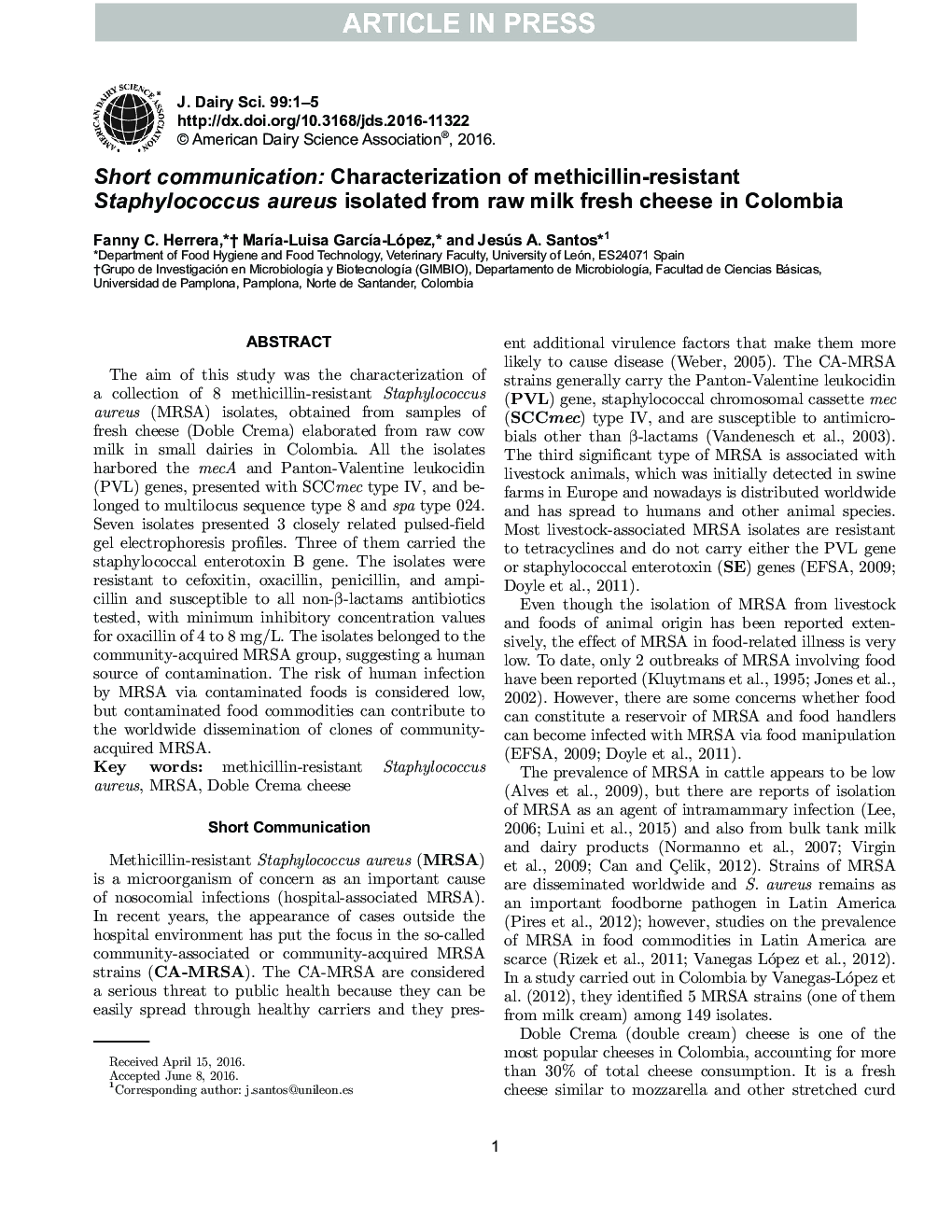| Article ID | Journal | Published Year | Pages | File Type |
|---|---|---|---|---|
| 5541822 | Journal of Dairy Science | 2016 | 5 Pages |
Abstract
The aim of this study was the characterization of a collection of 8 methicillin-resistant Staphylococcus aureus (MRSA) isolates, obtained from samples of fresh cheese (Doble Crema) produced from raw cow milk in small dairies in Colombia. All the isolates harbored the mecA and Panton-Valentine leukocidin (PVL) genes, presented with SCCmec type IV, and belonged to multilocus sequence type 8 and spa type 024. Seven isolates presented 3 closely related pulsed-field gel electrophoresis profiles. Three of them carried the staphylococcal enterotoxin B gene. The isolates were resistant to cefoxitin, oxacillin, penicillin, and ampicillin and susceptible to all non-β-lactams antibiotics tested, with minimum inhibitory concentration values for oxacillin of 4 to 8 mg/L. The isolates belonged to the community-acquired MRSA group, suggesting a human source of contamination. The risk of human infection by MRSA via contaminated foods is considered low, but contaminated food commodities can contribute to the worldwide dissemination of clones of community-acquired MRSA.
Related Topics
Life Sciences
Agricultural and Biological Sciences
Animal Science and Zoology
Authors
Fanny C. Herrera, MarÃa-Luisa GarcÃa-López, Jesús A. Santos,
